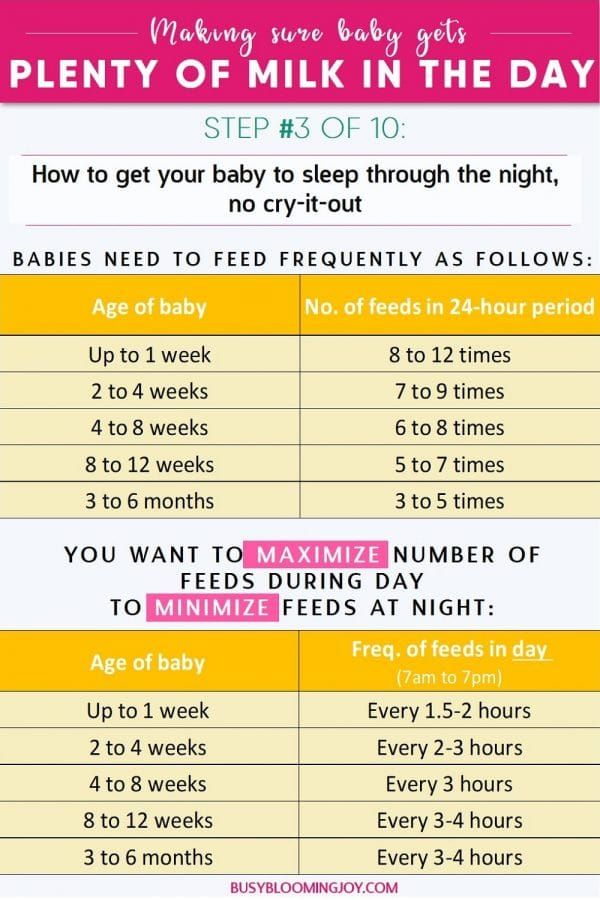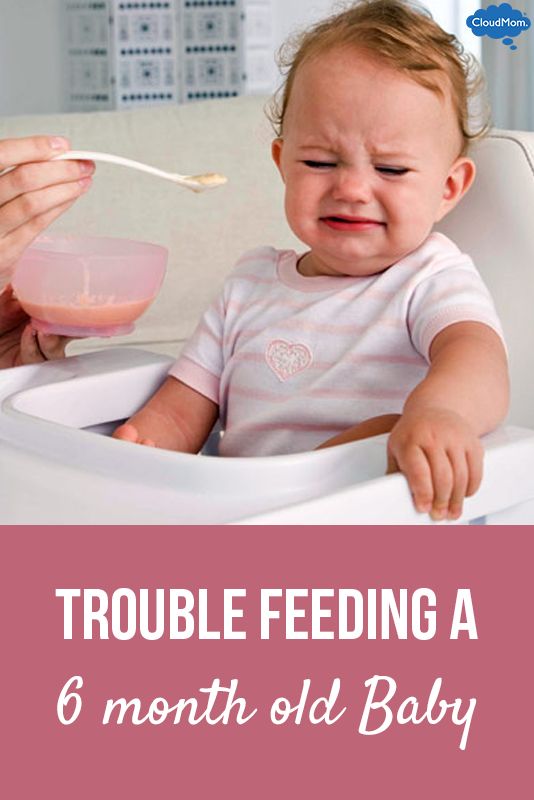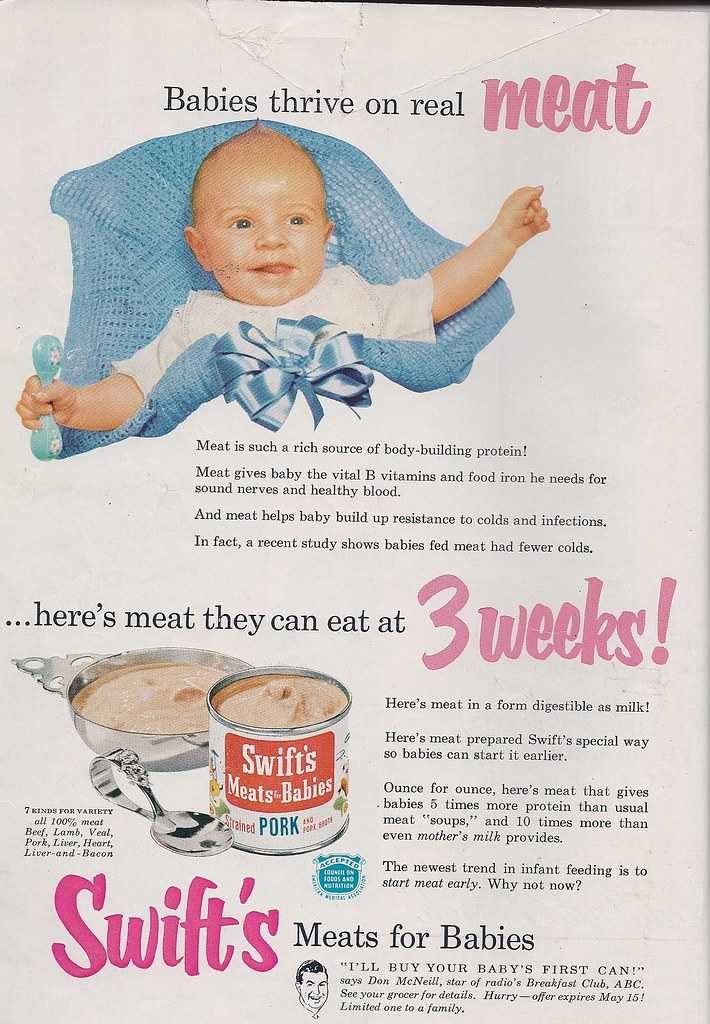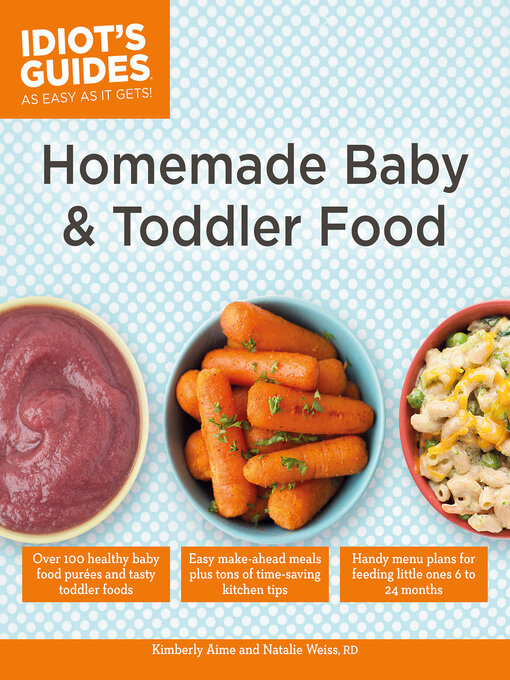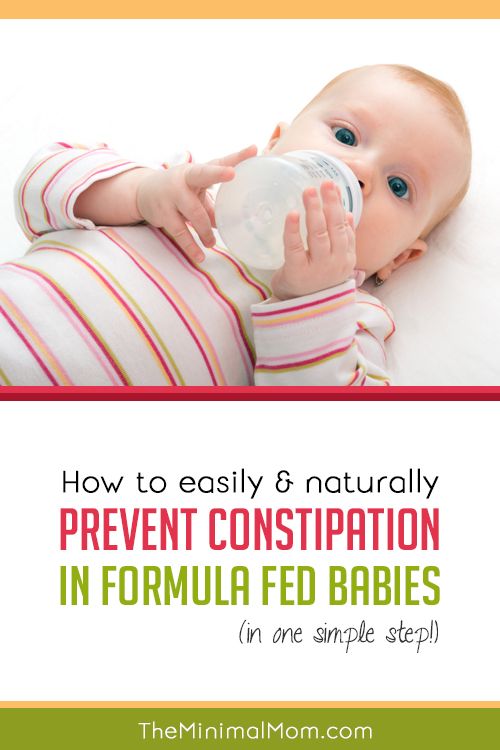Feeding baby yogurt for the first time
When can babies eat yogurt, and which baby yogurt is best?
Most babies can start eating yogurt as soon as they start eating solids – around 4 to 6 months. Yogurt is an excellent choice for one of your baby's first foods because it contains calcium, protein, and vitamins. The best option is plain, unsweetened, pasteurized yogurt (regular or Greek) made from whole milk and containing "live cultures."
What kind of yogurt is best for babies?
Nearly all flavored and fruit-on-top yogurts, even products marketed for babies, contain added sugar, which can contribute to tooth decay and obesity. The USDA guidelines recommend that children under 2 years old get no added sugar from their diet. Choosing plain yogurt is the easiest way to avoid added sugar.
To see whether a product has added sugar, check the nutrition label. Look at the line under "Total Sugars" to see how much of the sugar in a product is added sugar. (All yogurt contains some natural sugar in the form of lactose. )
Yogurt made from whole milk is best for babies and toddlers because they need the calories and fat in full-fat dairy products. Don't offer your child reduced-fat or fat-free yogurt before age 2 unless your healthcare provider advises it.
Greek yogurt is strained for a rich, creamy texture, and has twice as much protein as regular yogurt, making it another good choice for babies. Plus, it's often easier to find Greek yogurt in sugar-free varieties.
Is yogurt healthy for babies?
In addition to being a good source of calcium and protein, some types of yogurt contain live cultures, also known as probiotics. These are living microorganisms (bacteria) used to convert milk to yogurt, or added to yogurt afterward. They promote the growth of healthy bacteria in the gut, which researchers believe may help with digestion.
How can you tell whether yogurt has this good bacteria? The product label should state that the yogurt contains live or active cultures, which means the organisms haven't been destroyed by heat during processing. However, a label that says "made with active cultures" does not mean that the yogurt still contains living cultures, only that the yogurt was made with them (as all yogurt is).
However, a label that says "made with active cultures" does not mean that the yogurt still contains living cultures, only that the yogurt was made with them (as all yogurt is).
It can be hard to tell if a yogurt contains a significant amount of beneficial bacteria. One way is to look for the Live & Active Cultures seal by the International Dairy Foods Association. This seal identifies products that contain at least 100 million live and active cultures per gram. But participation in the program is voluntary, so a product without the seal isn't necessarily short on cultures.
You may wonder why it's okay for babies to eat yogurt, when drinking cow's milk isn't recommended until a baby is at least 12 months old.
Actually, a little bit of cow's milk, like the amount in the occasional serving of yogurt, won't hurt your baby. It's just not a good replacement for the breast milk or formula that still makes up most of their diet for the first year.
That's because babies can't digest cow's milk as easily or completely as breast milk or formula. And cow's milk doesn't have the ideal proportion of fats and nutrients that your baby gets from breast milk or formula.
And cow's milk doesn't have the ideal proportion of fats and nutrients that your baby gets from breast milk or formula.
For more information, see our article on when and how to introduce cow's milk to your child.
Yogurt allergies in babies
If your baby has been diagnosed with a milk allergy or shows signs of a food allergy (such as eczema), don't give them yogurt until you've checked with your healthcare provider.
Otherwise, as with any new food, wait at least three days after introducing yogurt before giving your baby another new food. That way, if your baby has an allergic reaction, it will be easier to tell what caused it.
Common symptoms of an allergic reaction include itchy red spots or patches, swelling around the lips or eyes, or vomiting within two hours of eating the recently introduced food. If you notice any of these symptoms, don't give your baby any more of the food until you've checked in with your provider.
Lactose intolerance – which is different from a milk allergy – is very rare in babies. Even if your child becomes lactose intolerant, it may be fine for them to eat yogurt. The production process breaks down much of the lactose, making yogurt more easily tolerated than other dairy products.
Even if your child becomes lactose intolerant, it may be fine for them to eat yogurt. The production process breaks down much of the lactose, making yogurt more easily tolerated than other dairy products.
Yogurt recipes for babies
Your baby may not be a fan of plain yogurt, so try adding flavor (and nutrients) by mixing in fruit or vegetables. For babies who are new to solids, start with pureed fruit and cooked, pureed vegetables. For older babies, you can add soft fruit and cooked vegetables chopped into small pieces. Mashed avocado, applesauce, oatmeal, and wheat germ are also good additions.
Never give honey to a baby younger than 12 months because it may contain bacteria that can cause botulism in children that age.
Try these baby food recipes with yogurt:
- Yogurt and berry swirl
- Baby guacamole
- Tropical fruit salad
When Can Babies Eat Yogurt?
Written by WebMD Editorial Contributors
Reviewed by Dan Brennan, MD on March 14, 2021
In this Article
- Introducing Your Baby to Yogurt
- Nutritional Benefits of Yogurt for Your Baby
- How to Prepare Yogurt for Your Baby
- Tips for Introducing New Foods to Your Baby
When you begin to offer your baby solid food around six months, you introduce them to a variety of tastes, flavors, and textures. Before you begin, it’s important to know how to safely introduce allergenic foods.
Before you begin, it’s important to know how to safely introduce allergenic foods.
Yogurt is a great food choice once your baby is introduced to solids. Yogurt is safe for babies as long as you pay close attention to nutrition labels and watch for any allergic reactions. Talk to your doctor first if there is a history of dairy allergy or lactose intolerance in your family.
Introducing Your Baby to Yogurt
Be sure to read labels on yogurt and make sure to avoid two specific ingredients:
- Honey. Honey isn't safe before 12 months because your baby may contract a type of food poisoning called botulism.
- Added sugar. Many yogurts have added sugar or sweeteners that have no benefit for your baby. Try sweetening yogurt with fruit instead.
You should only introduce one new food at a time to your baby, and wait at least three days before introducing another. By doing this, you can pinpoint an allergic reaction if they have one. Since dairy allergies are common, this is especially important when offering yogurt to your baby.
Since dairy allergies are common, this is especially important when offering yogurt to your baby.
Watch for these signs of an allergic reaction:
- Vomiting
- Diarrhea
- Skin rash
- Swelling around the lips or eyes
If your baby has an allergic reaction, stop feeding them yogurt and call your pediatrician. They can provide guidelines of when to try offering yogurt again to see if the allergy goes away with time.
Nutritional Benefits of Yogurt for Your Baby
Yogurt is rich in protein and calcium, as well as phosphorus and B vitamins. While protein aids in muscle development and calcium promotes strong bones and teeth, most of yogurt's health benefits seem to come from its live bacterial content. Yogurt and other fermented foods that contain specific strains of live bacteria are known as “probiotic.” Probiotic foods like yogurt may help maintain a healthy balance of bacteria in your baby’s gut. Over time, probiotic foods may even prevent a wide range of health issues including obesity and diabetes.
A serving size for your baby is about half a cup of yogurt. Some yogurt brands are fortified with added protein and vitamins that are fine for your baby, but read labels carefully to look for added sugar and honey as ingredients.
How to Prepare Yogurt for Your Baby
Once you have established that your baby isn't allergic to either yogurt or individual fruits, add chopped or mashed fruits to your baby’s yogurt for added taste and sweetness. Make sure the pieces are small enough that they aren't a choking hazard.
Great chopped or mashed fruits to add to yogurt include:
- Strawberries
- Blueberries
- Peaches
- Banana
You can spoon-feed your baby or let them hold the spoon and try to feed themself. Of course, they might make a mess. This is part of their learning about food as they are introduced to solids.
Tips for Introducing New Foods to Your Baby
Before offering new foods, ask these questions:
- Can my baby hold their head up independently? This is an important developmental milestone for eating solid food.

- Is my baby interested in eating? Your baby may watch you eat with interest, or even try to grab your food and taste it. When you offer your baby a spoon, they should open their mouth to eat.
- Can my baby move food to their throat? If you offer food with a spoon, your baby may push it out with their tongue first. This is called the tongue-thrust reflex. With time they will learn to use their tongue to push the food to the back of their mouth and swallow.
Offer a variety. As your baby starts to eat solid foods, they need variety in their diet. This helps ensure your baby is receiving all of the nutrients they need and also helps expand their palate for new tastes.
Normalize new foods. Once you introduce a new food to your baby and you've confirmed they aren't allergic to it, try to offer it to them again at least twice a week. Not only does this familiarize your baby with new foods, but it can also prevent food allergies. Additionally, when your baby is learning to eat, they watch you. Make sure to offer them the same foods the rest of the family is eating for encouragement.
Additionally, when your baby is learning to eat, they watch you. Make sure to offer them the same foods the rest of the family is eating for encouragement.
Consider Allergens. By the time your baby is 12 months old, they should be introduced to each of the common allergenic foods:
- Cooked egg
- Creamy peanut butter
- Cow’s milk (dairy)
- Tree nuts (such as cashew or almond paste)
- Soy
- Sesame
- Wheat
- Fish and other seafood
By introducing these foods early in life, you can reduce your baby’s chance of developing food allergies.
From what age can yogurt be given to children and how to prepare it at home?
One of the favorite treats for both adults and children is yogurt. This product is obtained by adding microorganisms that promote fermentation to milk - thermophilic streptococcus and Bulgarian stick. This distinguishes it from other fermented milk products and provides its beneficial effect.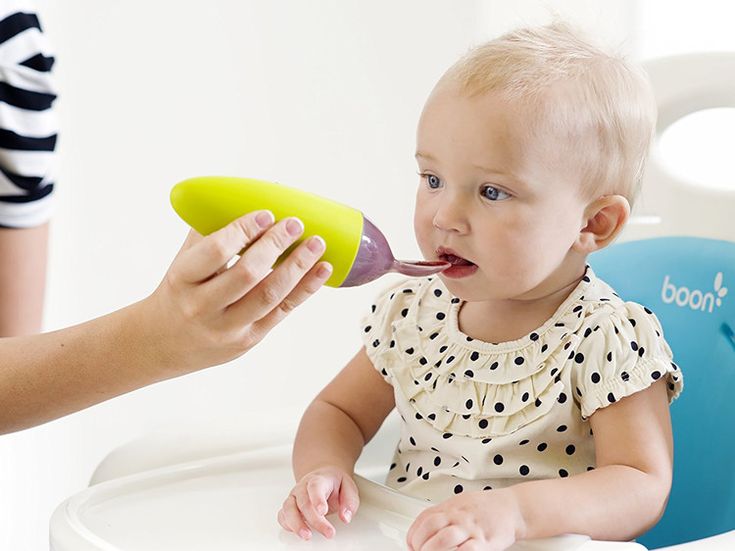 At what age can you start giving your baby yogurt? What is the benefit for the child from this product? Can it negatively affect the child's body? How to make healthy yogurt at home? Is it possible to feed a child with store-bought yogurt and how to choose the right quality yogurt for babies?
At what age can you start giving your baby yogurt? What is the benefit for the child from this product? Can it negatively affect the child's body? How to make healthy yogurt at home? Is it possible to feed a child with store-bought yogurt and how to choose the right quality yogurt for babies?
Contents
Yogurt - what is it good for?
- Yoghurt is a source of protein that is easily digestible in the child's body;
- This fermented milk product contains a lot of calcium, which is important in the formation of bones and strengthening of teeth;
- Yogurt contains many vitamins A, B, potassium, chlorine and phosphorus. Yogurts contain many vitamins and microelements that are important for the growth of a child;
- The probiotics in this product are good for digestion. and immunity Yogurt is useful to eat after taking antibiotics, it restores the microflora in the intestine;
- If you eat yogurt every day, the body produces interferon, and it increases the protective functions of the body;
- Children's yogurt can be liquid (you can drink it) and thick (pectin is added to it), which allows you to diversify the baby's complementary foods with this product.
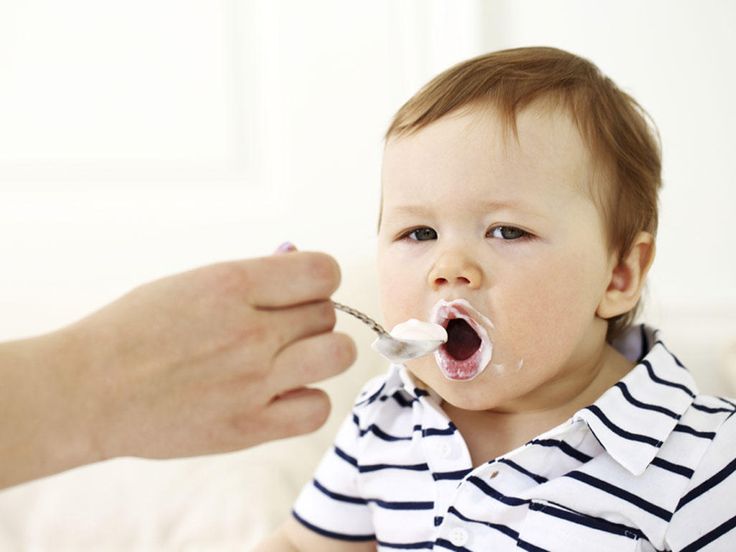
When can yogurt be dangerous?
Yogurt itself cannot harm a child, but since it is a perishable product, there is a danger of feeding the baby expired and spoiled yogurt. Always carefully check the date of manufacture of the product and the expiration date .
There are so many fermented milk products in the stores now that you can accidentally choose yogurt that is not intended for children in such abundance. You need to be careful not to make such mistakes.
Are you allergic to yogurt?
A baby may be allergic to yogurt in two cases:
- if the fermented milk product contains berries and fruits;
- if the baby is allergic to cow's milk protein.
At what age are children offered yogurt?
Pediatricians recommend giving yogurt to formula-fed babies from the age of 8 months. Breastfed babies are introduced to complementary foods from 9 months.

How to properly introduce into the diet?
The first acquaintance of the baby with yogurt is best done during breakfast, offering him one spoonful of the new product . This is done so that during the day it is possible to assess the child's condition - whether there is an allergy to yogurt. If there is no reaction, then in the future, yogurt is given to the child along with fruit foods, during an afternoon snack. This is usually the fourth feeding of the day. Yogurt can also be combined with cookies and cottage cheese.
Yogurts not marked “for children” with live bacteria are given to a child after two years. What portion of yogurt is recommended for children to eat at an early age? The daily volume of this product should not exceed half of the norm of all fermented milk supplements received by the child. Children under 1 year old are given 80-100 ml of yogurt, and at the age of 1 to 3 years, the portion is increased to 200 ml.
How to make your own yogurt
Yogurt starter can be bought at any pharmacyTo make yogurt, you need to buy a special starter. You will also need fresh boiled milk. It is advisable to sterilize the dishes in which you will prepare the yogurt.
In a yogurt maker
Cool the boiled milk to a temperature of 38-40 degrees, not higher, add the starter. At temperatures over 40 degrees, bacteria will not be able to multiply and yogurt will not turn out. After adding the leaven to it, mix thoroughly. Pour milk into sterile containers. Now the yogurt maker will do its job. It constantly maintains the desired temperature at which bacteria actively multiply. The main advantage of the yogurt maker is the long-term maintenance of the temperature necessary for the “work” of the starter microorganisms.
The process of preparing the product in the yoghurt maker takes approximately 8-10 hours. You can put milk at night, and in the morning you can eat yogurt. Store it in the refrigerator for no longer than 4-5 days. It is better to give this product to a child in the first two or three days after fermentation - the longer the yogurt is stored, the less beneficial bacteria it contains.
Store it in the refrigerator for no longer than 4-5 days. It is better to give this product to a child in the first two or three days after fermentation - the longer the yogurt is stored, the less beneficial bacteria it contains.
Making yogurt in a yogurt maker:
In a multicooker
You can also make yogurt in a multicooker if it has a Keep Warm mode. Boil 2 liters of milk, then cool it to the desired temperature (38-40 degrees). We add sourdough to it. Having closed the device with a lid, set it to the desired “yogurt” mode. Cooking time - 8-10 hours. When the yogurt is ready, pour it into glass containers and put it in the refrigerator. You can eat it after 2-3 hours.
Homemade yogurt in a slow cooker:
In a thermos
Add the starter to boiled and cooled to 40 degrees milk, mix. Pour it into a thermos, after dousing the thermos with boiling water . This must be done to clean the thermos from pathogenic bacteria. We close the thermos, wrap it in a towel and put it in a warm place - near the battery in winter or in a sunny place in summer.
After 4-7 hours the product in a thermos is usually ready. Now you need to pour the yogurt into sterile cups or jars. Then we send it to the refrigerator for at least a couple of hours. In a cold environment, bacteria growth stops, preventing further mowing of milk . In yogurt, you can put pieces of fruit, a little jam or syrup.
How to make homemade yogurt in a thermos:
Homemade yogurt for children under one year old - recipes
It's good if the baby liked the taste of yogurt without additives.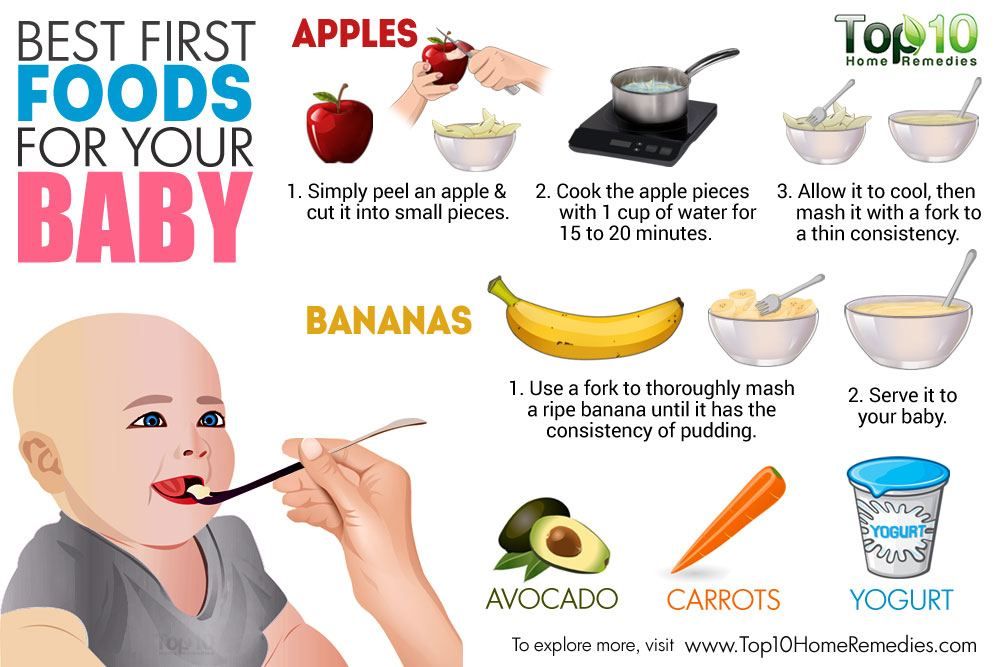 However, some kids are happy to eat sour-milk products, if you diversify their taste with fruits. What ingredients go with homemade or store-bought baby yogurt?
However, some kids are happy to eat sour-milk products, if you diversify their taste with fruits. What ingredients go with homemade or store-bought baby yogurt?
- With apples or applesauce.
- Peach or peach puree.
- Pumpkin.
- Pear.
- Banana.
- Curd.
- Cookies.
Important! When you mix yogurt with fresh fruit, you should eat it right away, but you can add canned fruit puree from the store in advance.
Seasonal fruit salad with yogurt
[sc name=”rsa” ]
Yoghurt is an excellent dressing for fruit salads. Since it is better for children to give only seasonal fruits, we will conditionally divide salads into summer and winter. Such a delicacy can be pampered by children over 1 year old. Let's look at some recipes for fruit salads with yogurt.
Add fruits of your choice and omit those you don't have on hand. Fruit salad is always delicious!
Fruit salad is always delicious!
How to make summer salad:
You will need:
- small apple;
- pear;
- plum - 3 pcs.;
- melon - 1 slice;
- grapes - a small handful.
Thoroughly wash the fruit and remove the stones and skins. Cut the pulp into small cubes, season the salad with yogurt. If you need to sweeten the dish, add a little honey.
Winter fruit salad:
You will need the following ingredients (1 each):
- apple;
- banana;
- kiwi;
- persimmon;
- tangerine.
Remove the skin and seeds from the fruit and cut the flesh into cubes. Lay the fruits in layers, seasoning each of them with yogurt. You can sprinkle a little sugar on each layer.
It is best to treat your baby to this salad as soon as it is prepared, so that the fruit does not lose its beneficial properties. To increase appetite and to interest the child, you can try to design a new dish in the form of a house, car or some kind of animal.
How to make yoghurt taste great, and what are some useful additives?
Dried fruits. Raisins and dried apricots are very useful on their own. If you add them to yogurt, then it will not lose its value and will acquire a sweetish note. Moreover, children always like to catch dried fruits from yogurt and eating it turns into a kind of game.
Vanilla. She has an excellent aroma, from which many are delighted. If you add a little vanilla to the finished yogurt, it will be incredibly fragrant and appetizing. The main thing is not to overdo it, otherwise the product will be slightly bitter.
Nuts. Nuts are rich in fats, which are so necessary for a growing child's body. They help make yogurt not only tastier, but also more satisfying. Cashews, almonds, hazelnuts, and walnuts make great additions.
Cashews, almonds, hazelnuts, and walnuts make great additions.
Muesli. Also able to change the taste of yogurt and make it more satisfying. The flakes become soft and melt, which many children like.
Which starter to use?
If you want to prepare healthy yogurt for your baby, do not use store-bought yogurt as a starter, as the fillers and microflora of the product will give you unpredictable results. Buy only a special starter that contains the bacteria needed to make yogurt.
Purchase starter culture at a pharmacy (or store), check its expiration date. Make sure it has been kept in the refrigerator. When preparing yogurt for a child under one year old, always take a new starter.
There are also starter cultures from which other fermented milk products are prepared - these are streptosan, bifivit and vitalact. They contain other bacteria. Occasionally indulge your little ones with foods made from these starters for a change.
Choosing a good yogurt for a child in a store
- Look at the label to see if the product is labeled “yogurt”.

- Read the ingredients - baby yogurt should only be made with milk and starter. If the composition contains flavors, preservatives and thickeners, refuse to buy.
- Yoghurts containing pieces of fruit may be purchased but should be given carefully. The baby may have an allergy. It is best to add store-bought fruit puree to regular plain yogurt.
- For a small child, especially the first year of life, it is better to choose semi-fat or classic milk yogurt with a fat content of up to 3.2 g. For a child from 2 to 5 years old, classic, milk-cream and cream-milk yogurts are suitable. Fat-free and reduced-fat yoghurts are not foods of choice for children and should only be used on the advice of a doctor.
- Check expiration date. Valid value is 5-7 days. Yoghurts that can be stored longer contain preservatives. Do not buy a product that can be stored without refrigeration.
- Yoghurts of currently known manufacturers - Aktimel, Miracle, Ehrmann, Rastishka, Immunele and others do not belong to baby food.
 They have a longer shelf life, they contain dyes and flavors identical to natural ones. They are allowed to be given to children from 3 years old, this is indicated on the product packaging.
They have a longer shelf life, they contain dyes and flavors identical to natural ones. They are allowed to be given to children from 3 years old, this is indicated on the product packaging. - If the yogurt is marketed as a bioproduct, the microbial concentration data must be on the label. Usually, by the end of their expiration dates, their content should be at least 107 CFU.
Agusha
Under the brand name "Agusha" 2 types of yoghurts for children up to 1 year old are produced
- viscous, to be eaten with a spoon;
- drinkable, which can be drunk from a cup or bottle.
Both recommended from 8 months. Agusha is distinguished by the widest range of children's yoghurts.
The shelf life of Agusha yoghurts is 14 days.
Tyoma
Tyoma only has drinking yoghurts. Bioyoghurts Tyoma are recommended from 8 months.
Ingredients: whole milk, powdered and skimmed milk, sugar, fruit puree and juice, thickener (cornstarch), natural color (carrot juice), acidity regulator (concentrated lemon juice), Bioyoghurt Tyoma contains 3.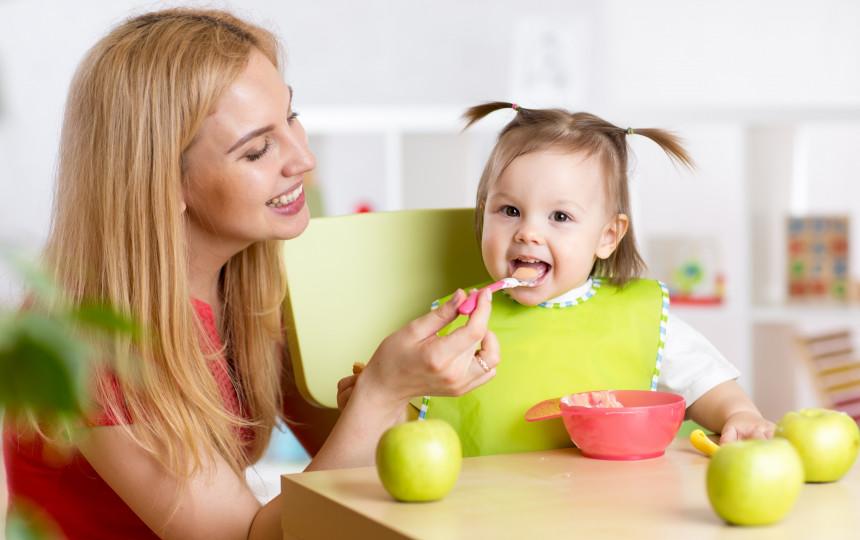 2% protein, 2 .8% fat, 11.5%, sugar 5.8%, calories 84 kcal.
2% protein, 2 .8% fat, 11.5%, sugar 5.8%, calories 84 kcal.
The introduction of yogurt to the child's menu is something that cannot be neglected, because the benefits of this product are obvious. The Bulgarian stick contained in it has a detrimental effect on various pathogenic bacteria in the body. Therefore, yogurt can be called a natural probiotic that protects the health of your crumbs.
Tips for consumers: how to choose the right yogurt?
Myths about yogurt - the benefits and harms of yogurt for children
Although yogurt has long been a well-known product, there are many myths around it. Consider the most popular of them.
Myth 1. Yogurt is a source of vitamins missing in the body. It is not true. Yes, yogurt contains vitamins necessary for the child's body, but their amount is very small.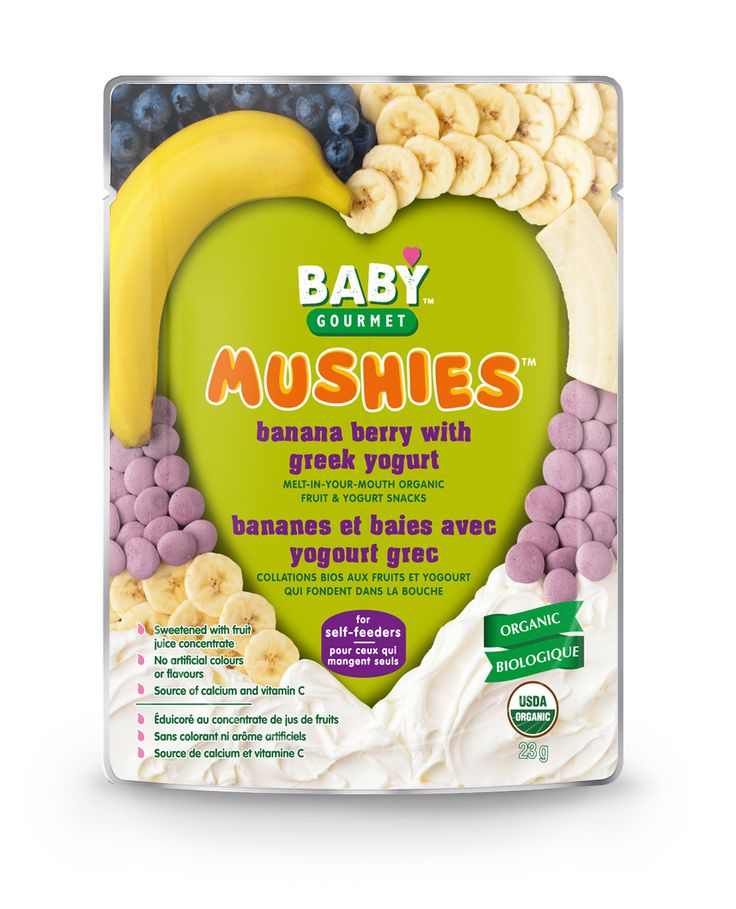 To replenish the body with the missing vitamins, the child will have to drink liters of yogurt.
To replenish the body with the missing vitamins, the child will have to drink liters of yogurt.
Myth 2. Live yogurt can have a long shelf life. This is a delusion of modern mothers who believe that technology has taught a quality product not to deteriorate for a long time. Not true. All-natural yogurt can be consumed within a week and only if it is properly stored. After this period, all beneficial bacteria in the dessert die and it can no longer be called alive. Long-term storage yogurts contain preservatives in their composition, therefore they are not natural and are not recommended for children.
Myth 3. Yogurt is rich in calcium, like all dairy products. This is not entirely true. Calcium enters the body of a cow that gives milk with food. If it is not in grass and feed, then it is not in milk, and it will not be in yogurt. Therefore, in order for the milk you bought (and, accordingly, yogurt) to contain calcium, you must know for sure that the cow received it, for example, with special feed.
Myth 4. Yogurt is good for the kidneys. In fact, dairy products really cleanse the body of toxins, but fermented milk yogurt is not recommended for children with sand or kidney stones. Nephrologists in this case require to completely exclude it from the diet.
Myth 5. Yogurt should not be taken if urate is detected. On the contrary, yogurt should be drunk to children who have been found to have them, since fermented milk products are the best way to remove urates from the body.
Myth 6. Any yogurt benefits the body. The biological value of yogurt is reduced to zero after its pasteurization, so thermally processed yoghurts have absolutely no benefit - they no longer have live bacteria.
Myth 7. Yogurt should not be taken for diarrhea. This is another common misconception. After restoring the water balance, it is best to start eating with yogurt, which will help restore healthy intestinal microflora.
Myth 8. Sweet yogurt is just as healthy as plain yogurt. Sugar and bacteria can react with each other, so sugar-free yogurt is best.
Myth 9. Yoghurt can replace two or three meals a day. Do not get carried away with yoghurts - the children's body should receive good nutrition, rich in proteins, fats, carbohydrates, micro and macro elements. Yogurt cannot fully replace other foods.
Want to be the first to read our content? Subscribe to our telegram channel or VKontakte group.
We are in Zen - join us!
Our Blog in - Pulse Mail.ru
Rules for introducing complementary foods to a child 4-12 months old: the first complementary foods, menus, charts, tables, principles of nutrition for a baby
Modern principles of complementary foods for children practical experience and the latest scientific developments. They are based on the recommendations of the European Association of Pediatric Gastroenterologists, Hepatologists, Nutritionists ESPGHAN , American Academy of Pediatrics AAP and national guidelines from relevant ministries and associations.
Complementary foods: online course
Modern recommendations are based on the analysis of the results of many studies on the composition, timing of the introduction of complementary foods in Europe for healthy full-term newborns, taking into account various aspects of the introduction of complementary foods, its impact on physical and mental development. Timely introduction of complementary foods contributes to the optimal development of all systems and organs of the child, physical parameters, psychomotor development, and the activity of the nervous system. The period of introduction of complementary foods is very important for the growth and development of the child, as well as an outstanding stage in the transition of the child from breastfeeding to feeding from the general table.
- It is inappropriate to develop separate recommendations for the introduction of complementary foods for breastfed or formula-fed children, the approaches in these cases are the same
- Breastmilk mothers remains the gold standard exclusive breastfeeding for at least 4 months (17 weeks) of an infant's life, up to 6 months (26 weeks) standard of exclusive or predominant breastfeeding
- The digestive tract and kidney function are mature enough for a baby to accept complementary foods at 4 months of age, and between 5 and 6 months the baby develops the necessary motor skills to consume solid foods.
 Therefore, at this age, it is important to give food of the right consistency and in the right way
Therefore, at this age, it is important to give food of the right consistency and in the right way - A well-nourished mother can provide all the nutrients, vitamins, and minerals her baby needs through exclusive breastfeeding up to a maximum of 6 months of age
- Some children may need iron supplementation earlier than 6 months
- It is important to continue breastfeeding in parallel with the introduction of complementary foods. This has been shown to reduce the risk of gastrointestinal and respiratory infections, as well as hospitalizations in a child
- When comparing initiation of complementary foods at 4 or 6 months of age, no significant differences were found in the effect on growth and body weight, development of obesity during the first 3 years of life
- At the same time, a high risk of developing overweight and obesity was established with the introduction of complementary foods before 4 months of age
- Complementary foods (solid or liquid food other than breast milk or infant formula) should be started not earlier than 4 months and not later than 6 months
- With age, with the introduction of complementary foods, the child should be offered food varied in texture, texture, taste, smell
- Children have an innate tendency to distinguish and prefer sweet and salty foods, reluctantly eat bitter, which we cannot change.
 But we can shape and adjust the child's taste preferences through training, systematically offering the child foods with different tastes, including sour, bitter green vegetables
But we can shape and adjust the child's taste preferences through training, systematically offering the child foods with different tastes, including sour, bitter green vegetables - Whole cow's milk Not recommended for infants under 12 months of age. The use of cow's milk is associated with the intake of an increased amount of energy, protein, fat, and lower - iron. Therefore, children who consumed large amounts of cow's milk at an early age had a higher risk of developing iron deficiency anemia
- Eating more protein when complementary foods increase the risk of overweight and obesity, especially in individuals with a predisposition to this, so protein intake should not exceed 15% of energy intake during the day
- The baby's requirement for iron is very high during the entire period of complementary feeding, therefore it is necessary to ensure the provision of iron-rich foods, especially for breastfed children
- Allergenic products can be administered from the age of 4 months at any time, since it is during this period that the formation of immune tolerance to the allergen occurs.
 For example, children at high risk of developing allergic reactions to peanuts should be administered at 4-12 months of age under specialist supervision. No relationship was found between the timing of the introduction of allergenic complementary foods and the development of allergic or immunological diseases. However, this does not mean the need for early introduction of allergenic products to everyone, but it emphasizes that there is no need to postpone the introduction of allergenic products after 4 months for a longer period;
For example, children at high risk of developing allergic reactions to peanuts should be administered at 4-12 months of age under specialist supervision. No relationship was found between the timing of the introduction of allergenic complementary foods and the development of allergic or immunological diseases. However, this does not mean the need for early introduction of allergenic products to everyone, but it emphasizes that there is no need to postpone the introduction of allergenic products after 4 months for a longer period; - Gluten may be offered to a child aged 4-12 months, however large amounts of gluten should be avoided during the first weeks after initiation of its introduction, thereafter a safe amount has not been established. The type of feeding (breast/artificial) was not identified with the introduction of gluten to reduce the risk of developing celiac disease, type 1 diabetes;
- Sugar or salt should not be added to complementary foods, and sweetened drinks and juices should be avoided.
 Sugary drinks are liked by babies in the first months, but if they are not given, but after 6 months, the children no longer like them very much. Sugar affects future eating behavior. Sugar is an important factor in the development of caries - it contributes to caries, as glucans can be formed, which increase the adhesion of bacteria to tooth enamel, disrupt the diffusion balance of acid and buffer systems, which ultimately contributes to damage to the enamel.
Sugary drinks are liked by babies in the first months, but if they are not given, but after 6 months, the children no longer like them very much. Sugar affects future eating behavior. Sugar is an important factor in the development of caries - it contributes to caries, as glucans can be formed, which increase the adhesion of bacteria to tooth enamel, disrupt the diffusion balance of acid and buffer systems, which ultimately contributes to damage to the enamel. - Vegetarian diets are contraindicated in young children due to the risk of vitamin B12, iron, zinc, folate, long chain fatty acid, protein and calcium deficiencies, which can lead to irreversible adverse effects and impaired cognitive development;
- Vegetarian diet can only be used under the close supervision of a doctor and nutritionist, with the obligatory additional administration of vitamins B, D, iron, zinc, calcium, proteins, PUFAs, which can ensure the appropriate growth and development of the child.
 It is important that parents should be aware of the risk of irreversible harmful consequences (mental disability, death of the child) that may develop if they do not follow the recommendations of specialists.
It is important that parents should be aware of the risk of irreversible harmful consequences (mental disability, death of the child) that may develop if they do not follow the recommendations of specialists.
General rules for the introduction of complementary foods for children of the first year of life:
- Introduce the first feeding It is better in the morning feeding 9-11 in the morning to trace the reaction of the child to the new product.
- Without added sugar and salt .
- Give the first complementary foods to the child when he is calm and not tired .
- Start with 0.5-2 teaspoons. If the child refuses, do not insist, try to give later or the next day.
- If the reaction is normal - no rash, no skin changes, no stool changes, double the dose the next day.
 Gradually bring the baby's first complementary foods to the age norm 80-200 g
Gradually bring the baby's first complementary foods to the age norm 80-200 g - If there is an allergic reaction or other intolerance reaction - refuse to introduce this complementary food for three days, if the adverse reaction occurs again - do not give this product, contact your pediatrician.
- Each subsequent new complementary food product must be one-component only: marrow, cabbage, broccoli, buckwheat, meat, etc.
- Mixed food dish give when the child has already become acquainted with all the products separately.
- It is not advisable to introduce new products three days before and after vaccinations.
If you are thinking about introducing complementary foods, then your child should already have certain signs of readiness for this:
- Holds head
- Able to stand alone, practically without support, sit on a special highchair with side support
- Opens mouth when a spoonful of food is brought
- Turns away from a spoonful of food when not hungry
- Closes mouth with spoon in mouth holds food in mouth and then swallows rather than pushing or spitting it out
First complementary foods at 4 months
The age of 4 months as the minimum for the introduction of complementary foods was also chosen because at 4 months the child's gastrointestinal tract becomes more mature: the initially increased permeability of the small intestine mucosa decreases, a series of digestive enzymes, a sufficient level of local immunity is formed, the child acquires the ability to swallow semi-liquid and thicker food, associated with the extinction of the “spoon ejection reflex”.
Therefore, to the question whether it is necessary to give complementary foods to a 3-month-old baby , one can unequivocally answer: no, it's too early!
But 4 months, this is the time when you can think about the introduction of complementary foods. At the same time, it should be remembered that at the age of 4 months, the child has enough mother's milk or a highly adapted milk formula for its full development. In addition, when they talk about complementary foods at 4 months, they usually mean the end of the 4th month of life. It is important to continue breastfeeding in parallel with the introduction of complementary foods.
Video: Power feeding at 4 months
If you enter complementary foods at the 4th month of your life -usually one-component vegetable or fruit puree if the child does not gain weight well enough well , then it can be gluten-free porridges: rice and buckwheat .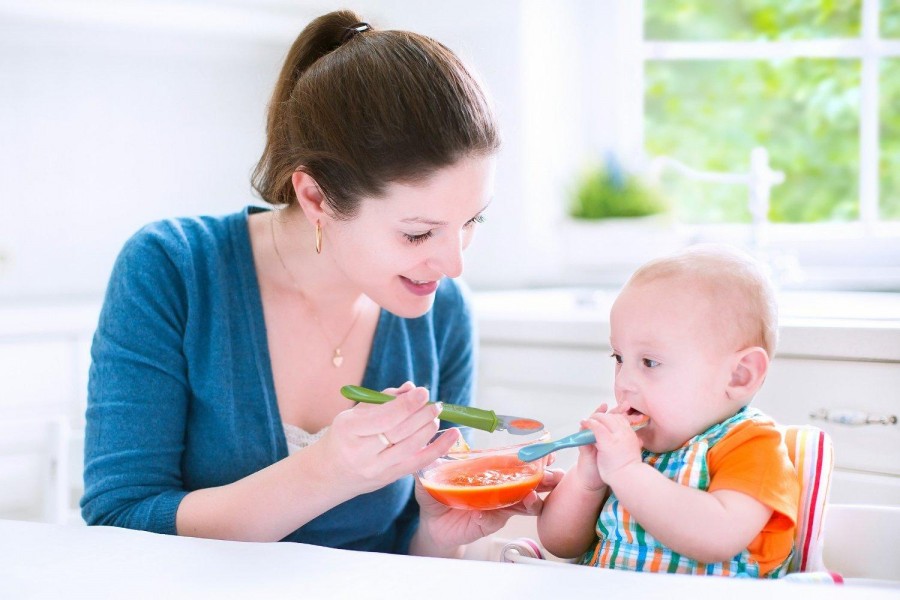 It is better to start with vegetable puree. Kids are smart and if he tries a sweeter fruit puree, he can refuse vegetable puree for quite some time and you may have difficulty introducing this very healthy dish.
It is better to start with vegetable puree. Kids are smart and if he tries a sweeter fruit puree, he can refuse vegetable puree for quite some time and you may have difficulty introducing this very healthy dish.
What is useful in vegetable supplements and what is the best way to prepare it?
Vegetable puree - for the first feeding can be prepared from cauliflower, zucchini, pumpkin, broccoli - these are low-allergenic products, are among the ten most useful vegetables in the diet of children, contain a large amount of healthy proteins, fiber and vitamins, microelements ! Fiber helps move food through the digestive tract and promote beneficial microflora in the gut. Pectins absorb and remove toxins from the baby's body. Vegetables have a positive effect on the acid-base balance of the body, creating conditions for the proper functioning of all organs and systems.
Cauliflower - is a good source of fiber, protein, minerals and vitamins: A, B1, B2, B3 (PP), B6, as well as a small amount of vitamins K, D and tocopherol (vitamin E). In the inflorescences of cabbage there is a lot of magnesium, sodium, potassium, phosphorus, calcium, iron. It contains twice as much iron as green peas, peppers and lettuce. Cauliflower protein is easily digestible and its content is quite high. Cauliflower protein contains essential vitamin U (methionine). It is one of the essential amino acids that cannot be synthesized by the human body. Other essential amino acids are also present in a small amount: arginine, tryptophan.
In the inflorescences of cabbage there is a lot of magnesium, sodium, potassium, phosphorus, calcium, iron. It contains twice as much iron as green peas, peppers and lettuce. Cauliflower protein is easily digestible and its content is quite high. Cauliflower protein contains essential vitamin U (methionine). It is one of the essential amino acids that cannot be synthesized by the human body. Other essential amino acids are also present in a small amount: arginine, tryptophan.
Zucchini - rich in vitamins and microelements. It contains potassium, magnesium, phosphorus, calcium, vitamins C, B1 and B2 and others, folic acid. Which plays an important role in the processes of hematopoiesis. Zucchini is rich in such important trace elements as iron and copper. They are necessary for the formation of nervous tissue, normalization of metabolism, as well as for the formation of hemoglobin, which is a good prevention of anemia.
Broccoli is a very healthy vegetable that is a type of cauliflower. Pleasant soft taste and good digestibility of the product, unique composition have a beneficial effect on the health of both adults and children. Eat unopened cabbage inflorescences. This is also a low-allergenic vegetable, rich in protein, fiber, vitamins, calcium, iron, trace elements and even phytoncides. The content of calcium and magnesium is sufficient to balance the functioning of the nervous system, ensure the normal regulation of the child's sleep and wake cycle, and good stress resistance. A child with such nutrition becomes calmer, less excited and naughty.
Pleasant soft taste and good digestibility of the product, unique composition have a beneficial effect on the health of both adults and children. Eat unopened cabbage inflorescences. This is also a low-allergenic vegetable, rich in protein, fiber, vitamins, calcium, iron, trace elements and even phytoncides. The content of calcium and magnesium is sufficient to balance the functioning of the nervous system, ensure the normal regulation of the child's sleep and wake cycle, and good stress resistance. A child with such nutrition becomes calmer, less excited and naughty.
Broccoli is the leader in choline and methionine content. Only 50 g of broccoli provides the baby with a full set of nutrients for a day.
Pumpkin is the largest vegetable on Earth. It is one of the ten most useful vegetables in the diet of children, contains a large amount of useful proteins, fiber and vitamins, including beta-carotene, vitamin C, E, K, iron, potassium, magnesium, trace elements that are indispensable for children's nutrition, as they strengthen immunity and help fight inflammation, have a beneficial effect on the nervous system. By the content of carotene, pumpkin exceeds carrots by 5 times.
By the content of carotene, pumpkin exceeds carrots by 5 times.
Vitamins and microelements contained in pumpkin help the child grow, provide healthy sleep, are responsible for the condition of the skin and eyes, improve metabolic processes, and accelerate the removal of harmful substances from the child's body. Due to its beneficial qualities, pumpkin can be one of the first types of complementary foods for an infant.
All vegetable purees have a specific vegetable smell, this is absolutely normal
0005
Introduction of vegetable puree
Vegetables should be introduced into the child's menu gradually. Start giving each new vegetable in the form of a monocomponent puree in the amount of ½ teaspoon, preferably at breakfast, so you can track the manifestations of food allergies or intolerance reactions to this product. If all is well, then the next day, offer him a teaspoon. So gradually you need to bring the portion to 50-100 grams. A serving of vegetable puree per day for an 8-month-old baby is approximately 80 grams. In a year, you can increase up to 150 grams. The next product can be administered no earlier than 4-5 days later. If a child has skin rashes, his stool has changed, then you need to remove the product from the diet and consult a pediatrician.
A serving of vegetable puree per day for an 8-month-old baby is approximately 80 grams. In a year, you can increase up to 150 grams. The next product can be administered no earlier than 4-5 days later. If a child has skin rashes, his stool has changed, then you need to remove the product from the diet and consult a pediatrician.
If the child does not like the dish, for example, broccoli, do not give up and continue to offer this vegetable in small quantities - 1-2 spoons a day, maybe not even once, but 2-3 times before meals, and after 7 - 10, and sometimes 15 days, the baby will get used to the new taste. This diversifies the diet, will help form the right taste habits in the child.
Fruit puree introduction
Fruit puree is a definite alternative and addition to vegetables. It can be made from apples, bananas - by the way, do you know what a berry is?, sweet varieties of pears. These fruits contain substances useful for babies, vitamins and minerals, including iron, which is extremely necessary for children. Prune puree is somewhat separate, it has a good effect on the baby's digestion, especially with a tendency to constipation, and, of course, also contains many useful substances.
Prune puree is somewhat separate, it has a good effect on the baby's digestion, especially with a tendency to constipation, and, of course, also contains many useful substances.
Porridges in the nutrition of a child in the first year of life.
Porridge can be introduced into the baby's diet at the end of 4 months or at the fifth or sixth month of life. As a rule, they go as a second food after vegetable or fruit puree. But if your child is not gaining weight very well, or you have been feeding your child with breast milk or infant formula until almost the end of 6 months, then complementary foods can be started with the introduction of cereals.
It is important to start with one-component, low-allergenic cereals which does not contain gluten : this is buckwheat, rice, corn porridge .
gluten-containing cereals include: wheat, oats, rye, barley, millet .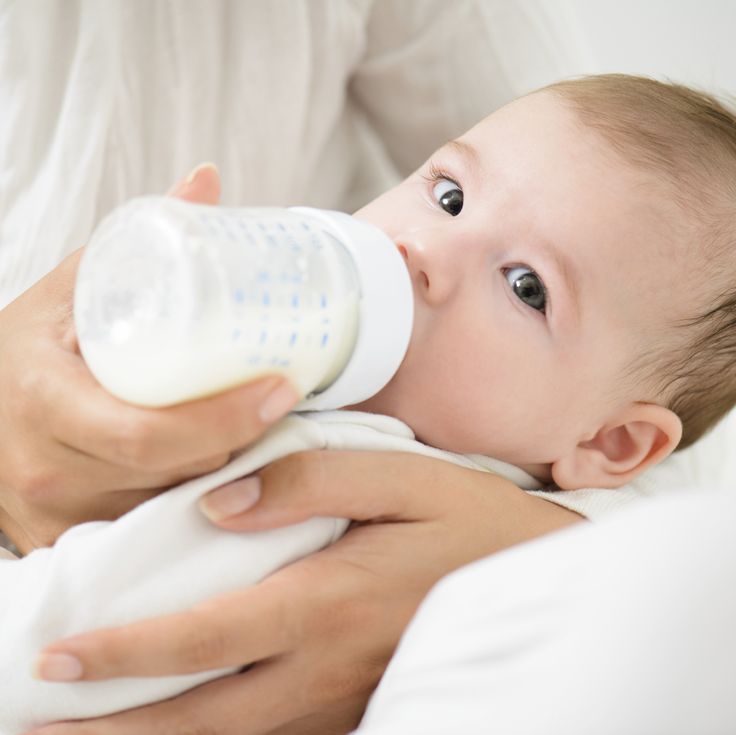
According to modern data , the period of introduction of gluten into the child's diet is not of fundamental importance, but the latest recommendations draw attention to the fact that its amount in the baby's diet should not be large. Therefore, it is better to add semolina and oatmeal to other porridge in a limited amount, and not to give it on its own. No relationship was found between the timing of the start of complementary foods that contain gluten and the development of celiac disease in a child. If your child hasn't tried porridge yet, start with a dairy-free, gluten-free, one-ingredient buckwheat or rice porridge.
Rice - very useful for growing baby. It has a low content of vegetable proteins, therefore it is easily digested and is especially useful for toddlers with unstable stools. Rice has a high nutritional value and, to a certain extent, protects the delicate intestines of the baby due to its enveloping effect. This is a hearty and nutritious dish with a good content of carbohydrates and proteins, potassium and magnesium, calcium and phosphorus, beneficial amino acids and vitamins. It replenishes energy costs, energizes and gives strength. Rice is not recommended for overweight children and those who suffer from severe constipation.
This is a hearty and nutritious dish with a good content of carbohydrates and proteins, potassium and magnesium, calcium and phosphorus, beneficial amino acids and vitamins. It replenishes energy costs, energizes and gives strength. Rice is not recommended for overweight children and those who suffer from severe constipation.
Gluten-free buckwheat porridge - very nutritious and rich in iron, fiber, rich in various vitamins and microelements. This is also a good option for starting a child's acquaintance with adult food. These porridges can be prepared with water, breast milk, milk formula, which your child is used to. No need to add salt and sugar.
Rules for introducing porridge into baby food
If the child already eats porridge from 5 months, then at 6 months you can offer a more complex porridge - for example, rice porridge with apricot or raspberries, rice porridge with banana (this is very successful a combination both in taste and in its properties) or even more complex porridge - corn-rice with banana.
Over time, you can start adding apple, banana, pear, plum and prunes, apricot and dried apricots, broccoli, carrots, berries, to the porridge, provided that the child is not allergic to them.
The rules for introducing cereals are the same as for vegetable puree. In order for the child to get used to the new product and its consistency more easily, first prepare 5% porridge (5 g of cereal per 100 g of water), if you make it yourself. Porridge is usually cooked with water, but can be made with breast milk, infant formula. First, give the baby one teaspoon, then, within 7-10 days, bring the volume of porridge of the same percentage to the full volume of feeding (150 g). If all this time the porridge is well tolerated, i.e. there are no skin rashes, the child has stable stools, they switch to a gradual (starting from 20-30 g) introduction of porridge of the same cereal, but already at a 10% concentration (10 g of cereal per 100 g of water). In other words, a thicker porridge is administered no earlier than 7-10 days from the beginning of the introduction of porridge. The complete introduction of 10% porridge to the baby is also carried out in 7-10 days. The third week falls on the complete addiction of the child to a new dish. Only after that you can introduce a new cereal (in the form of 10% porridge) or the next complementary foods.
In other words, a thicker porridge is administered no earlier than 7-10 days from the beginning of the introduction of porridge. The complete introduction of 10% porridge to the baby is also carried out in 7-10 days. The third week falls on the complete addiction of the child to a new dish. Only after that you can introduce a new cereal (in the form of 10% porridge) or the next complementary foods.
Video: feeding porridge
You need to give porridge with a spoon, it is better in the morning for breakfast. After porridge at the stage of its introduction, the child should be offered breast or milk formula. With artificial feeding, the volume of the mixture after a portion of porridge should be such that, together with porridge, it is 200 ml with five meals a day.
Norms for the introduction of cereals
In the future, the volume of the portion of porridge gradually increases, amounting to:
- 7-8 months - 160-170 ml
- 8-9 months - 170-180 ml
- 9-12 months - up to 200 ml (there is a complete replacement of one feeding of the child with complementary foods.
 )
)
Cereal schedule
- Day 1 – 1 teaspoon (5 g)
- Day 2 - 2 teaspoons (10 g)
- Day 3 - 3 teaspoons (15 g)
- Day 4 - 4 teaspoons (20 g)
- Day 5 - 50 ml (50 g)
- Day 6 - 100 ml (100 g)
- Day 7 - 150 ml (150 g)
Meat complementary foods - the rules for introducing meat into the child's diet
Meat is usually the third, very important product of complementary foods, after vegetables and cereals. The meat contains amino acids, complete animal protein, B vitamins (B1, B2, B6 and B12), heme iron, potassium, calcium, zinc, phosphorus, which are necessary for the growth and development of the child. It is very important to understand that mashed meat contains iron, which is easily absorbed. And the addition of meat to vegetables improves the absorption of iron from them, from vegetables.
Iron deficiency can seriously affect the intellectual development of the child, his immunity, hematopoiesis. Since your task is to raise a healthy and intelligent child, meat complementary foods must be introduced without fail and in a timely manner.
Since your task is to raise a healthy and intelligent child, meat complementary foods must be introduced without fail and in a timely manner.
Heme iron - found in meat products and easily digestible (red meat-veal, liver), absorption is about 25%.
Non-heme iron - found in plant foods (beans, beans, lentils, peas, nuts, tomatoes, cauliflower, green leafy vegetables, apples, dried fruits, but it is absorbed much worse from plants - only 3-5% Iron absorption from other animal products (eggs, fish) is 10-15%.0007
It is important to know that human milk enhances , while cow's milk reduces iron absorption .
Timing of the introduction of meat complementary foods
It is advisable to introduce meat puree to a child aged 6-8 months . This, to some extent, depends on when cereals and vegetable/fruit purees were introduced. if your baby has been eating vegetables and cereals since 4 months, meat can be introduced at 6 months. From 7 months it can be administered if the child is not gaining weight. From 8 months to children who started complementary foods at 6 months.
if your baby has been eating vegetables and cereals since 4 months, meat can be introduced at 6 months. From 7 months it can be administered if the child is not gaining weight. From 8 months to children who started complementary foods at 6 months.
Children at risk for anemia are advised to introduce meat earlier at the age of 5-6 months.
It has been proven that only the daily use of children's enriched porridge and meat puree can fully meet the needs of children in iron, zinc and other micronutrients.
You can start meat complementary foods with lean beef, veal , but better with less allergenic poultry meat ( turkey, chicken ), or rabbit, these are the most easily digestible meats.
Goose and pork are fatty for the baby, and the meat of duck and other birds of the reservoirs is also not suitable for the first feeding. They are recommended to give only after 3 years;
They are recommended to give only after 3 years;
Horsemeat is perfect for your baby. The product is rich in carbohydrates and proteins, but it is almost impossible to find horse meat for sale.
Meat should be introduced into the child's diet gradually, at lunchtime, first a quarter of a teaspoon and, gradually adding, bring it to the daily norm: At 8 months, about 50 g, at 9months-60-70 g.
9000
At first, it is better to give meat with vegetable puree that the child has already eaten, so that he adapts better to the new product, and iron is better absorbed. Children at the end of the first year of life can already be given 3 varieties of mashed meat.
Baby menu at 7-8 months
At 7-8 months you can start giving children 5 baby cottage cheese 9000 Start with 1/2 teaspoon. Within a month, the daily volume of cottage cheese consumption by a baby can be increased to 30-40 g. In addition, a child of 8 months is recommended to give sour-milk infant formula. But ordinary yogurt from the store should not be given. At this age, the child should receive 5 g of butter and 5 g (1 teaspoon) of vegetable oil, ¼- yolk - 2-3 times a week.
Within a month, the daily volume of cottage cheese consumption by a baby can be increased to 30-40 g. In addition, a child of 8 months is recommended to give sour-milk infant formula. But ordinary yogurt from the store should not be given. At this age, the child should receive 5 g of butter and 5 g (1 teaspoon) of vegetable oil, ¼- yolk - 2-3 times a week.
Baby's menu at 9 months
At the age of 9 months Your baby is already familiar at this age already usually familiar: , egg yolk . You may have already met meat . Therefore, at this age, they usually give already more complex purees and porridges, less homogenized, of various tastes , gradually preparing him for adult nutrition, increasing the variety and quantity of complementary foods. It is desirable to feed the baby at the table with other family members, he must see how his parents eat with pleasure, he learns from them. The amount of food offered should be based on the principles of actively encouraging the baby to eat, it is necessary to continue to gradually change the consistency and increase the variety of complementary foods, adhering to the recommended frequency of introducing complementary foods.
The amount of food offered should be based on the principles of actively encouraging the baby to eat, it is necessary to continue to gradually change the consistency and increase the variety of complementary foods, adhering to the recommended frequency of introducing complementary foods.
At this age, the child usually gets complementary foods 3 times a day . His diet depends on the age of the start of complementary foods. If the baby began to give new food at 4-5 months, the list of allowed foods will be much wider than if this happened at 6-7 months. Therefore, all this is very individual, there are no absolutely rigid frameworks and recommendations. On the Internet you will find a lot of different advice on baby food, if you are not sure about something, it is better to consult your pediatrician.
From vegetables the baby can be given what he ate before, mixing them: pumpkin, zucchini, cauliflower, broccoli, carrots and others, adding 1 tsp. vegetable oil . If the baby does not have skin reactions, then you can give beets . It is also possible to give two-, three-component vegetable purees and soups , but only on condition that he is already familiar with these products and he has not had a reaction to them.
vegetable oil . If the baby does not have skin reactions, then you can give beets . It is also possible to give two-, three-component vegetable purees and soups , but only on condition that he is already familiar with these products and he has not had a reaction to them.
If you have introduced complementary foods, then you need to remember that water is an important part of baby food. You can use purified water or special water for children .
In addition, at 9 months you can give special baby wheat cookies , which the baby will be happy to eat on his own as an adult, white wheat bread, this improves hand motility, improves eating skills, but at the same time he must be supervised.
At this age, you can start giving fish puree from low-fat varieties: river perch, pollock, hake, haddock, zander, saithe - start with ½ teaspoon, bringing up to 40-50 g , watching the reaction of the child , give at lunchtime instead of mashed meat, 1-2 times a week. But a number of pediatricians do not advise giving it up to a year, it is a useful, but highly allergenic product.
But a number of pediatricians do not advise giving it up to a year, it is a useful, but highly allergenic product.
10 month old baby menu
B 10 months usually 2 times a day the child receives mother's breast or special milk formulas . Various porridges : buckwheat, rice, corn, oatmeal, wheat, semolina porridge . add 5-10 g of butter to cereals. At this age, it is already possible to make complex cereals from 2-3 cereals with which the child is familiar, add various fruits, vegetables: apple, banana, pear, plum and prunes, apricot and dried apricots, broccoli, carrots, berries , provided that the child is not allergic to them, or use ready-made cereals with fruit.
From vegetables the baby can be given what he ate earlier, mixing them: pumpkin, zucchini, cauliflower, broccoli, carrots, beets and others, adding 1 tsp. vegetable oil . It is also already possible to give two-, three-component vegetable purees and soups, but only on condition that he is already familiar with these products and he did not have a reaction to them.
vegetable oil . It is also already possible to give two-, three-component vegetable purees and soups, but only on condition that he is already familiar with these products and he did not have a reaction to them.
At this age, the baby already usually eats about 40-50 g of baby meat puree from chicken, turkey, rabbit , with good tolerance to cow's milk proteins from veal or beef. If he has been eating meat for a month or more, you can start giving him two-component meat purees , for example from chicken and turkey.
At this age, fish puree from low-fat varieties is usually started: river perch, pollock, hake, haddock, pike perch, pollock with ½ teaspoon, bringing to 40-50 g, following the reaction of the child, it is better to give at lunchtime instead of mashed meat, 1-2 times a week .
At 10 months, children's cottage cheese should be given 2 times a week. Start with 1/2 teaspoon if you have not given it before, the daily amount of cottage cheese at this age is 40-50 g .
Start with 1/2 teaspoon if you have not given it before, the daily amount of cottage cheese at this age is 40-50 g .
It is recommended to give special sour-milk baby formulas.
At this age, a child can receive 5-10 g of butter and 5 g (1 teaspoon) of vegetable oil, and 2-3 times a week½ - yolk .
Child's menu at 1 year old
The child is one year old. He has already grown up, he already has 6-10 teeth, with which he gnaws everything he sees, he is interested in chewing food, his digestive enzymes already work well and he has already become acquainted with various products: vegetable and fruit purees, various cereal cereals, meat and fish, sour-milk mixtures. In fact, he is already prepared for the transition to a more adult diet. In a year, changing the diet involves turning to new products and gradually changing the way they are prepared and the degree of grinding.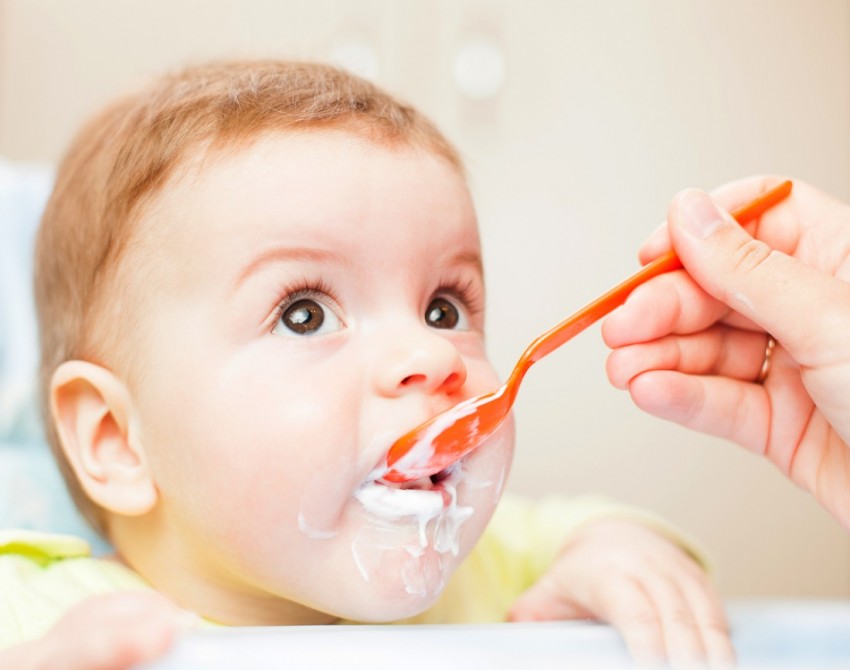
You need to eat 5 times a day with an interval 3.5-4 hours .
semi-liquid dishes should still remain the basis of nutrition, but not only mashed, but also containing small pieces of food . Too dry food should not be given to the baby yet, as he may have difficulty swallowing.
In the year the child already tries to eat with his hands and he should be encouraged to do so. Finely chopped, soft foods can be given eg: small pieces of soft fruit, vegetables, cheese, well-cooked meat, pasta , etc. and foods that dissolve quickly, children's cookies, children's bread - as food with the help of hands.
Must be avoided products that can enter the respiratory tract and cause asphyxia - sausages and other hard meat products , nuts (especially peanuts), grapes, raisins, raw carrots, popcorn, round candies . Hold off on this for now.
Hold off on this for now.
In a year, part of the children are without mother's milk. But if your baby is still not weaned - do not rush, if possible, give him a breast before bed at night. You can also breastfeed between meals. At this age, the child receives all the main vitamins and minerals from food, but he can get a number of biologically active components from breast milk.
Dairy products
Dairy products still occupy an important place in the child's diet, it is a source of calcium, B vitamins, protein, milk sugar and fat. It is better to use special baby milk (marked with a triple on the packaging), baby fermented milk products: kefir, yogurt in total 500-600 ml per day .
Cottage cheese
The child should be given cottage cheese. The daily dose of cottage cheese after 1 year can be increased up to 70 g per day .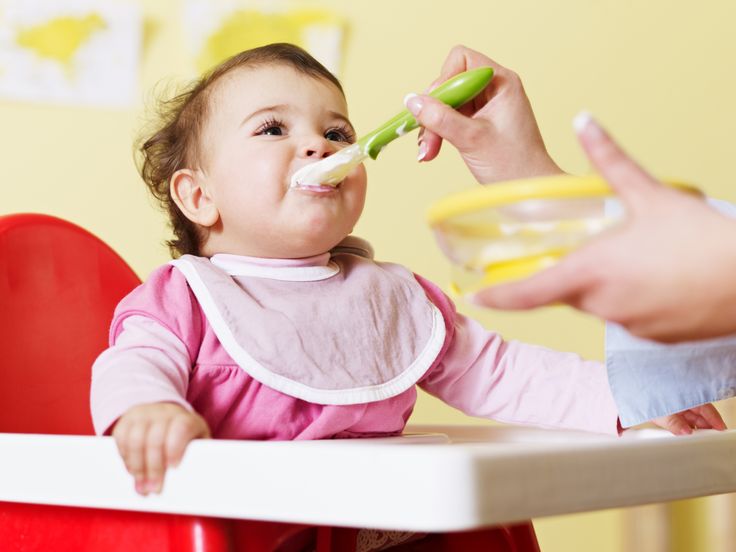 It can be given pureed or combined with fruit puree, pudding, casserole. This contributes to the development of chewing skills.
It can be given pureed or combined with fruit puree, pudding, casserole. This contributes to the development of chewing skills.
Butter
Butter can be added to cereals or smeared on wheat bread, cookies in a dose of up to 12 g per day.
Low fat sour cream and cream
After 1 year, you can give low-fat sour cream and cream in small quantities.
Vegetables
Every year a child must be given various vegetables , it is good to combine them with protein products, meat . The vegetable diet can now be diversified with green peas, tomatoes, turnips, beets, carrots, spinach in the form of mashed potatoes. Legumes are still better not to give.
Fruits and berries
After 1 year, you can gradually introduce the baby to new fruits and berries: strawberries, cherries, cherries, kiwi, currants, gooseberries, chokeberries, sea buckthorn, raspberries, blackberries, cranberries, blueberries, lingonberries and even citrus fruits . But do it gradually, watching the reaction of the child. Berries with a dense peel (gooseberries) are best mashed, while soft juicy fruits (peaches, strawberries, apricots, kiwi) can be offered to the baby in pieces.
But do it gradually, watching the reaction of the child. Berries with a dense peel (gooseberries) are best mashed, while soft juicy fruits (peaches, strawberries, apricots, kiwi) can be offered to the baby in pieces.
Daily dose of fruits - approx.
Meat products
Meat products can be given in the form of steam cutlets, meatballs, meatballs, meat souffle and pudding in an amount up to 100 g daily - beef, veal, lean pork, rabbit, turkey, chicken.
Fish
Fish can be given once or twice a week for 30-40 g per meal as a substitute for meat dishes
Eggs
Chicken, quail eggs give boiled or in the form of omelettes in milk, you can try with vegetables.
Kashi
Porridge can be cooked from rice, oatmeal, buckwheat, corn, millet, semolina. At this age, they should still have a uniform consistency, so it will be easier for him to swallow. You can use ready-made industrial, children's instant cereals, for example, various multi-cereal cereals, in which fruits, crackers, cereals have already been added. Give 1 time per day.
At this age, they should still have a uniform consistency, so it will be easier for him to swallow. You can use ready-made industrial, children's instant cereals, for example, various multi-cereal cereals, in which fruits, crackers, cereals have already been added. Give 1 time per day.
Water
Be sure to give the child clean water to drink, better bottled water for children, as much as he wants . In addition to her baby can drink vegetable and fruit juices, dairy products, compotes, weak tea.
No need to give:
no need to give confectionery and sweets to a child 0006 . From sweets at this age, you can sometimes give marmalade, dried fruits and cookies.
Do not give sausages and sausages , they are rarely prepared from high quality meats and are rich in various food additives
Calorie content and volume
0004 1200 ml .




